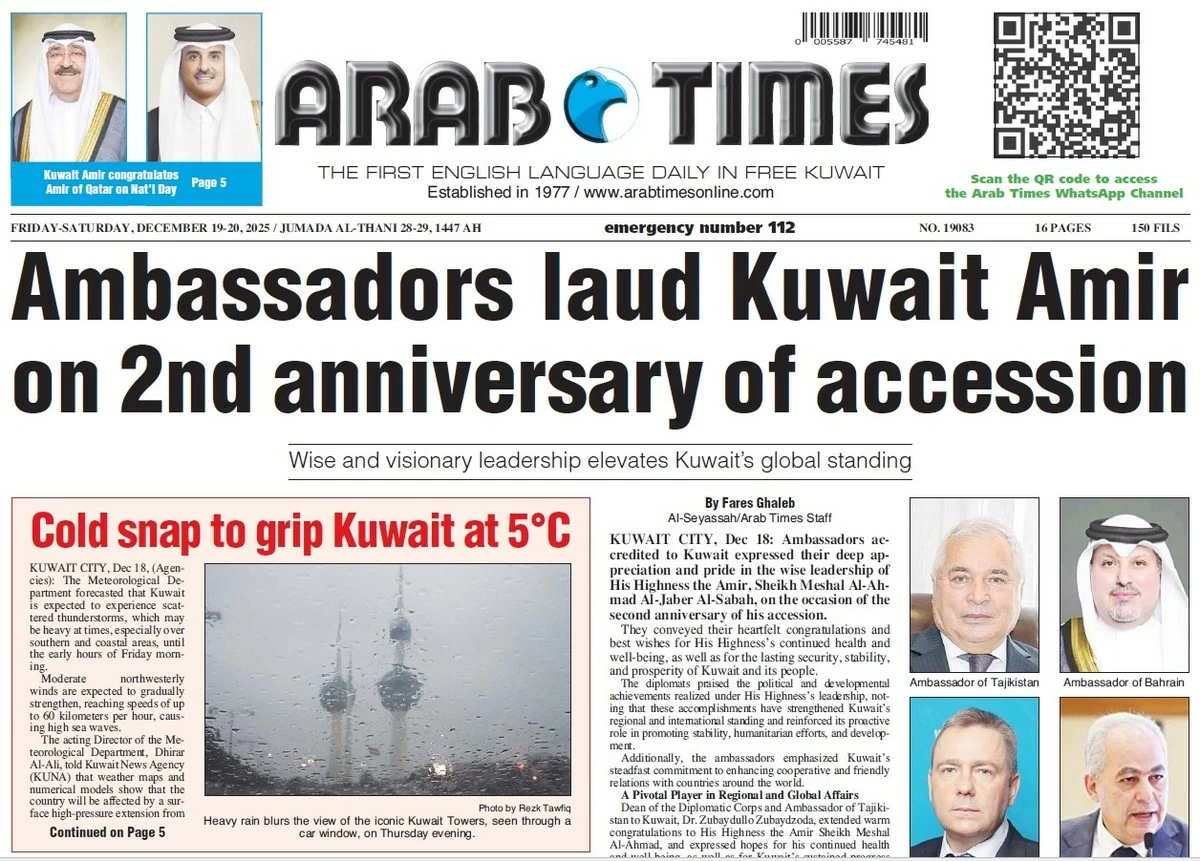23/10/2023
23/10/2023

KUWAIT CITY, Oct 23: An extreme drought in parts of the Amazon has led to a dramatic drop in river water levels, exposing dozens of usually submerged rock formations with carvings of human forms that may date back some 2,000 years.
“I thought it was a lie,” says Livia Ribeiro, who has lived for 27 years in Manaus, the capital of Amazonas state in northern Brazil, located on the banks of the Rio Negro River. “I have never seen anything like this before,” she explains after noticing the sculptures along the river at the Praia das Lajes site.
During a previous drought in 2010, the inscriptions were noticed for the first time, and they constitute an archaeological site of “great importance,” according to what archaeologist Jaime Oliveira, from the National Historical and Artistic Heritage Institute (IFAN) in Brazil, confirms.
Most of these engravings represent human faces, rectangular or oval, with expressions revealing smiles or more dark ones. Until recently, the waters of the Rio Negro River, one of the main tributaries of the Amazon River, whose flow last week reached its lowest level in 121 years, covered the rock formations and their works of art.
The rock carvings are not usually visible because they are covered by the waters of the Negro River, whose flow recorded its lowest level in 121 years last week.
The surfacing of the engravings on the riverbank have delighted scientists and the general public alike but also raised unsettling questions.
"We come, we look at (the engravings) and we think they are beautiful. But at the same time, it is worrying... I also think about whether this river will exist in 50 or 100 years," Ribeiro said.
Drought in Brazil's Amazon has drastically reduced river levels in recent weeks, affecting a region that depends on a maze of waterways for transportation and supplies.
The Brazilian government has sent emergency aid to the area, where normally bustling riverbanks are dry, littered with stranded boats.
According to experts, the dry season has worsened this year due to El Nino, an irregular climate pattern over the Pacific Ocean that disrupts normal weather, adding to the effect of climate change.


